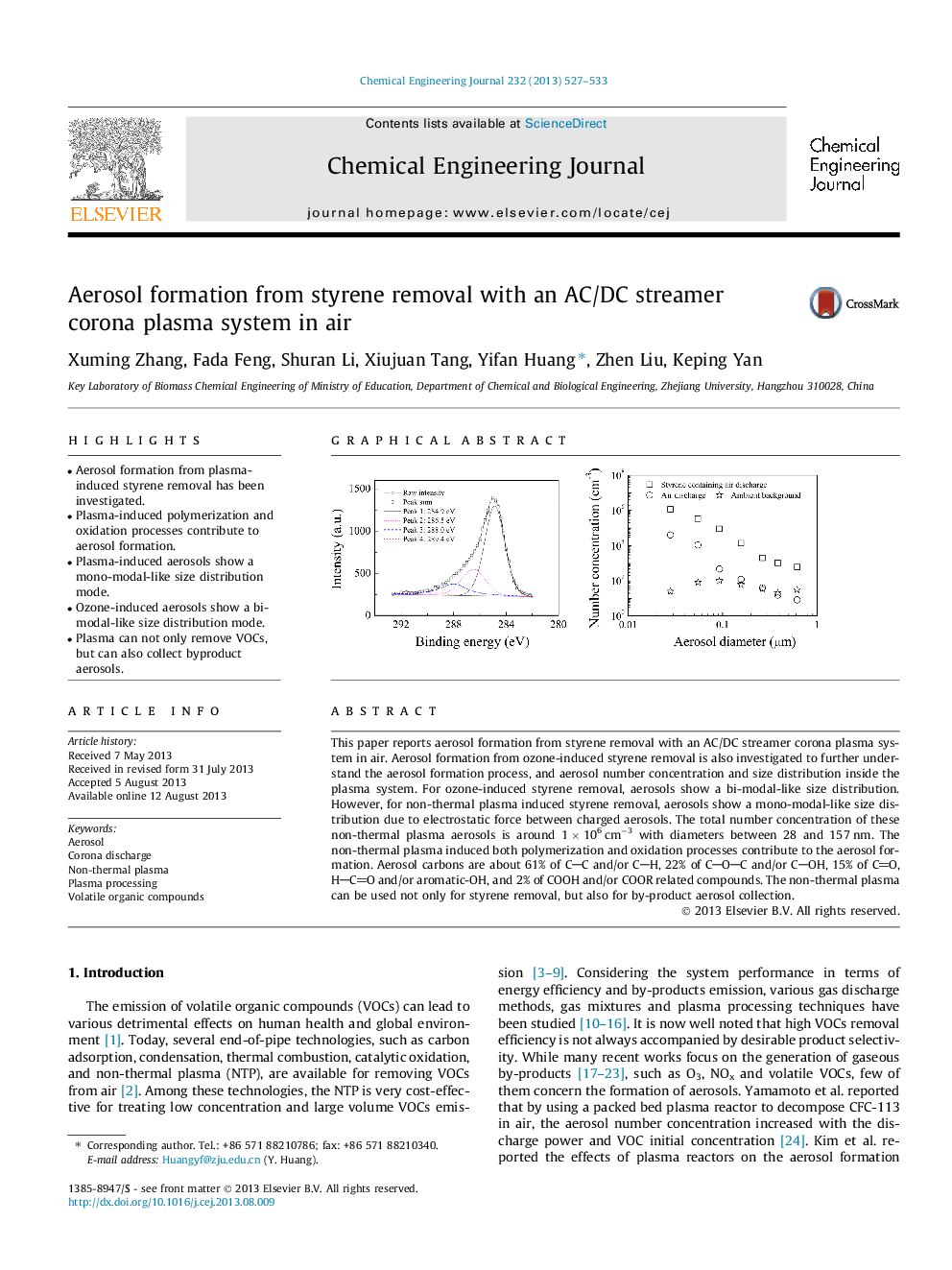| Article ID | Journal | Published Year | Pages | File Type |
|---|---|---|---|---|
| 148162 | Chemical Engineering Journal | 2013 | 7 Pages |
•Aerosol formation from plasma-induced styrene removal has been investigated.•Plasma-induced polymerization and oxidation processes contribute to aerosol formation.•Plasma-induced aerosols show a mono-modal-like size distribution mode.•Ozone-induced aerosols show a bi-modal-like size distribution mode.•Plasma can not only remove VOCs, but can also collect byproduct aerosols.
This paper reports aerosol formation from styrene removal with an AC/DC streamer corona plasma system in air. Aerosol formation from ozone-induced styrene removal is also investigated to further understand the aerosol formation process, and aerosol number concentration and size distribution inside the plasma system. For ozone-induced styrene removal, aerosols show a bi-modal-like size distribution. However, for non-thermal plasma induced styrene removal, aerosols show a mono-modal-like size distribution due to electrostatic force between charged aerosols. The total number concentration of these non-thermal plasma aerosols is around 1 × 106 cm−3 with diameters between 28 and 157 nm. The non-thermal plasma induced both polymerization and oxidation processes contribute to the aerosol formation. Aerosol carbons are about 61% of CC and/or CH, 22% of COC and/or COH, 15% of CO, HCO and/or aromatic-OH, and 2% of COOH and/or COOR related compounds. The non-thermal plasma can be used not only for styrene removal, but also for by-product aerosol collection.
Graphical abstractFigure optionsDownload full-size imageDownload as PowerPoint slide
